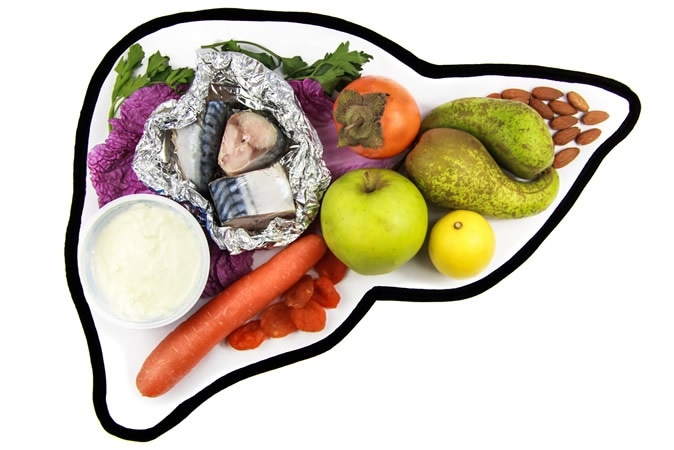A new study shows that a compound naturally occurring in a variety of commonly used vegetables as well as being produced by gut microbes is very useful in melting fat away from a fatty liver.

Image Credit: POLIGOONE / Shutterstock
The problem
Non-alcoholic fatty liver disease (NAFLD) is a condition in which the liver is stacked with fat. It may be due to overeating food with a high content of saturated fat. Other risk factors include obesity, which increases the risk 7-10 times compared with the general population.
Obesity is a metabolic issue which activates inflammation, which in turn is driven by white blood cells called macrophages. These are vitally involved in the fight against toxic or unfamiliar molecules. The recruitment of macrophages in fatty liver disease leads to worsening of liver injury due to the powerful chemicals released from these warrior cells designed to eat bacteria and other foreign material. If NAFLD is not treated, it could ruin the health of the liver, causing liver cirrhosis or even cancer.
The focus of the study was to describe indole effects on fatty liver, in 137 Chinese subjects. Indoles are found in cabbage, kale, broccoli and cauliflower, all cruciferous vegetables. Indole is produced during the breakdown of the amino acid tryptophan, which is a monoamine compound. It has activity against fatty degeneration of the liver, as well as anti-inflammatory and anti-cancer properties.
The study also looked at how indole affected animals fare on a low- and high-fat diet, when present at different concentrations. The high-fat diet recreated a situation like that found in NAFLD.
The researchers also examined the effects of indole on individual cells, in the liver and the intestine. Intestinal cells typically signal anti-inflammatory messages to the liver. Indole increased the expression of a master gene (PFKFB3), specific to immune cells originating in the bone marrow. It regulates glucose breakdown and also inhibits the inflammatory activity of macrophages.
When this gene was suppressed, the fatty liver became more severe with increased inflammatory activity. Indole lost much of its effectiveness on NAFLD in obese animals with NAFLD produced by a high-fat diet.
In addition, the study considered the activity of gut bacteria producing indole. Gut bacteria have mixed effects on the course of this disease. Those which produce indole have a positive influence in reducing the fatty deposition.
The present study looked at the presence of inflammation in the bowel, and inflammation of the liver, in predicting the outcome of indole exposure on NAFLD. It also examined the improvement caused by indole on fatty liver in animal models.
The findings
There was an inverse correlation between body mass index and blood indole levels – the heavier the individual, the lower the blood indole concentration. There was a significant drop in the indole levels in clinically obese subjects compared to those who were slender. Lower indole levels were also linked to greater fat content in the liver.
When animals on an NAFLD-producing high-fat diet were treated with indole, the amount of fat build-up within the liver was reduced, and inflammation was relieved. This helped the researchers identify the actual role of indole in this condition, and in easing liver inflammation. It also clarified what kind of benefit might be expected from the activity of indole in people with this condition.
Co-researcher Shannon Glaser says, “The link between the gut and the liver adds another layer of complexity to studies on non-alcoholic fatty liver disease, and future studies are very much needed to fully understand the role of indole.”
This initial study was based on Chinese subjects, but the results will be generalizable to other ethnic groups, according to researcher Qifu Li, making allowances for the gut bacterial composition and different levels of metabolites.
Foods that give rise to high indole level, or medications which act via the same mechanism, could present new treatments for NAFLD, according to the researchers, who also think this approach could help prevent the condition. Says investigator Chaodong Wu, “Preventing NAFLD's development and progression may depend on nutritional approaches to ensure that gut microbes allow indole and other metabolites to function effectively.”
He wants future research on how healthy foods can change the composition of gut microbes for better indole production as well as for other metabolites. He summarizes, “Based on this research, we believe healthy foods with high capacity for indole production are essential for preventing NAFLD and are beneficial for improving the health of those with it. This is another example where altering the diet can help prevent or treat disease and improve the well-being of the individual.”
Journal reference:
Ma, L., Li, H., Hu, J., Zheng, J., Zhou, J., Botchlett, R., Matthews, D., Zeng, T., Chen, L., Xiao, X., Athrey, G., Threadgill, D., Li, Q., Glaser, S., Francis, H., Meng, F., Li, Q., Alpini, G. and Wu, C. (2020), Indole Alleviates Diet‐induced Hepatic Steatosis and Inflammation in a Manner Involving Myeloid Cell PFKFB3. Hepatology. Accepted Author Manuscript. doi:10.1002/hep.31115